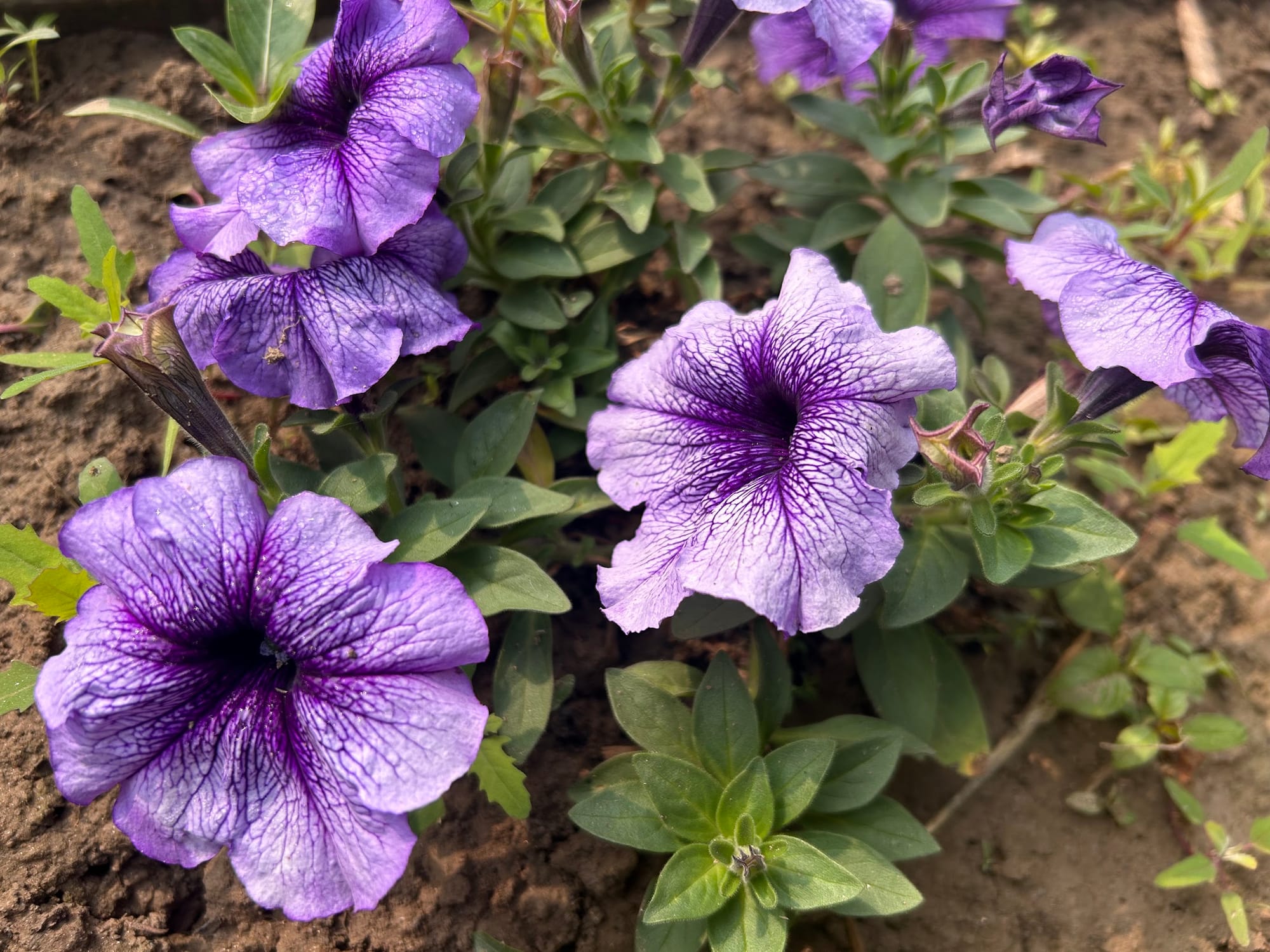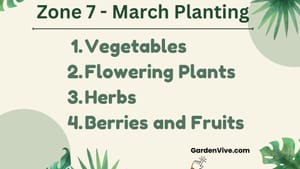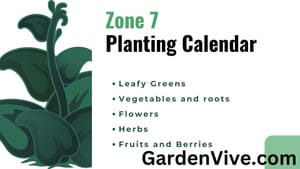
Many of us in Zone 7 are starting to make plans for spring gardening. I have seen many gardeners like to take a break from gardening in winter, especially in January. I appreciate the restless gardeners, looking for what to plant in January in Zone 7. This article is for those who want a January planting guide for Zone 7.
If you have already checked my full-year planting calendar with visual charts for Zone 7, you might notice that I leave January and February blank.
The reason is simple: that planting schedule tells you only the best planting times. If you follow my planting guide, your garden will be green and beautiful year-round.
Note: I will show you charts for January planting. Some of the seeds can be started indoors. If you want the best planting times, please check my year-round planting calendar. The plant names you will find here can be planted in January and they will perform great.
But that does not mean that January is the best planting time for those.
This is winter, you can witness sudden extreme cold anytime. It's best to check the weather forecast. This will help you to buy time to cover your plants. I have made a chart on when to cover your plants in winter based on temp.
January Planting Guide for Zone 7
I am separating the charts into several categories:
- Vegetables
- Flowering plants
- Herbs
- Berries
Do you know that some specific varieties of the same plant perform better in this cold? In my chart, you will find a "variety suggestion" column.
Let's start this planting guide!
Vegetables
Usually, I create separate charts for leafy greens, roots, and vegetables. Practically, you can not grow a lot of veggies in January in Zone 7. This is why I can fit all of them together in a single chart.
If you want only the best performers you can consider only these vegetables: (The planting methods can be found in the chart)
- Leafy greens: Spinach, Lettuce, Kale.
- Root Vegetables: Carrots, Beets.
- Other Vegetables: Onions, Peas.
Can you take your time out to spend in gardening? Then the below chart is for you:
| Vegetable | Planting Method | Transplanting Time | Variety Recommendation | Frost Tolerance |
|---|---|---|---|---|
| Spinach | Direct sow outdoors if soil is workable | Not typically transplanted | Bloomsdale Long Standing | Very high (can tolerate light frost) |
| Lettuce | Start seeds indoors | Transplant in 4–6 weeks | Buttercrunch, Black Seeded Simpson | Moderate (needs frost protection) |
| Kale | Start seeds indoors | Transplant in 6 weeks | Lacinato, Siberian Kale | Very high |
| Collard Greens | Start seeds indoors | Transplant in 6 weeks | Georgia Southern | Very high |
| Swiss Chard | Start seeds indoors | Transplant in 4–6 weeks | Bright Lights | High |
| Carrots | Direct sow outdoors | Not applicable | Nantes, Danvers Half Long | High |
| Beets | Direct sow outdoors | Not applicable | Detroit Dark Red | Moderate |
| Radishes | Direct sow outdoors | Not applicable | Cherry Belle, French Breakfast | High |
| Turnips | Direct sow outdoors | Not applicable | Purple Top White Globe | High |
| Parsnips | Direct sow outdoors | Not applicable | Hollow Crown | High |
| Onions | Start seeds indoors or plant sets | Transplant in 8–10 weeks | Yellow Sweet Spanish, Walla Walla | Very high |
| Peas | Direct sow outdoors if soil is workable | Not typically transplanted | Little Marvel, Sugar Snap | Moderate |
| Garlic | Plant cloves outdoors (if not done in fall) | Not applicable | Softneck, Hardneck varieties | Very high |
| Cabbage | Start seeds indoors | Transplant in 6–8 weeks | Golden Acre, Red Express | High |
| Broccoli | Start seeds indoors | Transplant in 6–8 weeks | Calabrese, Waltham 29 | High |
If you have grow lights, you can germinate the seeds faster.
Have you ever noticed that in winter the veggies taste a bit sweeter? The frost activates a natural process in the cold hardy plants which converts starches into sugars.
Garlic can be grown in partial sunlight. This is why you can make use of your shady area by planting garlic.
To keep the soil warmer, a wooden raised bed can be a good choice.
Flowering plants
| Plant | Planting Method | Transplanting Time | Fragrance | Perennial or Annual |
|---|---|---|---|---|
| Pansies | Direct sow outdoors or plant seedlings | Not typically transplanted | Mild, sweet | Annual |
| Violas | Direct sow outdoors or plant seedlings | Not typically transplanted | Subtle, sweet | Perennial (treated as annual in colder climates) |
| Sweet Alyssum | Start seeds indoors | Transplant in 4–6 weeks | Strong, honey-like | Annual |
| Snapdragons | Start seeds indoors | Transplant in 6–8 weeks | Mild, pleasant | Perennial (treated as annual in colder climates) |
| Larkspur | Direct sow outdoors | Not applicable | None | Annual |
| Calendula | Start seeds indoors | Transplant in 4–6 weeks | Mild, herbal | Annual |
| Primrose | Start seeds indoors | Transplant in 6 weeks | Mild, sweet | Perennial |
| Forget-Me-Not | Direct sow outdoors | Not applicable | None | Biennial/Perennial |
| Hellebore | Plant nursery transplants | Not applicable | None | Perennial |
| Winter Jasmine | Plant rooted cuttings | Not applicable | Mild, pleasant | Perennial |
Among the above-listed plants, you can grow the below as perennials:
Perennials: Violas, Snapdragons, Primrose, Hellebore, Winter Jasmine.
I love the name "Forget-Me-Not". This is also known as scorpion grasses.
One plant that I have not added to my list but you can give it a try: Petunia.

Herbs and Berries
| Plant | Planting Method | Transplanting Time | Flavor/Taste | Perennial or Annual |
|---|---|---|---|---|
| Parsley | Start seeds indoors | Transplant in 6–8 weeks | Fresh, slightly bitter | Biennial |
| Cilantro | Direct sow outdoors | Not applicable | Citrusy, slightly spicy | Annual |
| Chives | Start seeds indoors | Transplant in 6 weeks | Mild onion flavor | Perennial |
| Dill | Start seeds indoors | Transplant in 4–6 weeks | Earthy, grassy | Annual |
| Thyme | Start seeds indoors | Transplant in 6 weeks | Earthy, slightly minty | Perennial |
| Oregano | Start seeds indoors | Transplant in 6–8 weeks | Earthy, slightly peppery | Perennial |
| Strawberries | Plant bare-root crowns | Not applicable | Sweet, slightly tangy | Perennial |
| Blueberries | Plant bare-root bushes | Not applicable | Sweet, mildly tart | Perennial |
| Raspberries | Plant bare-root canes | Not applicable | Sweet, slightly tangy | Perennial |
| Blackberries | Plant bare-root canes | Not applicable | Rich, sweet | Perennial |
In winter, there is little chance of pests in your garden. But as the temp. rises you may face pests.
This is why I highly encourage planting some perennial herbs in your garden. You can use those as companion plants for the vegetable garden.
Do you want a printable chart for Zone 7 ? Just subscribe to this site and let me know through the contact button. I will share the chart with you. I will appreciate the free subscription as well.



